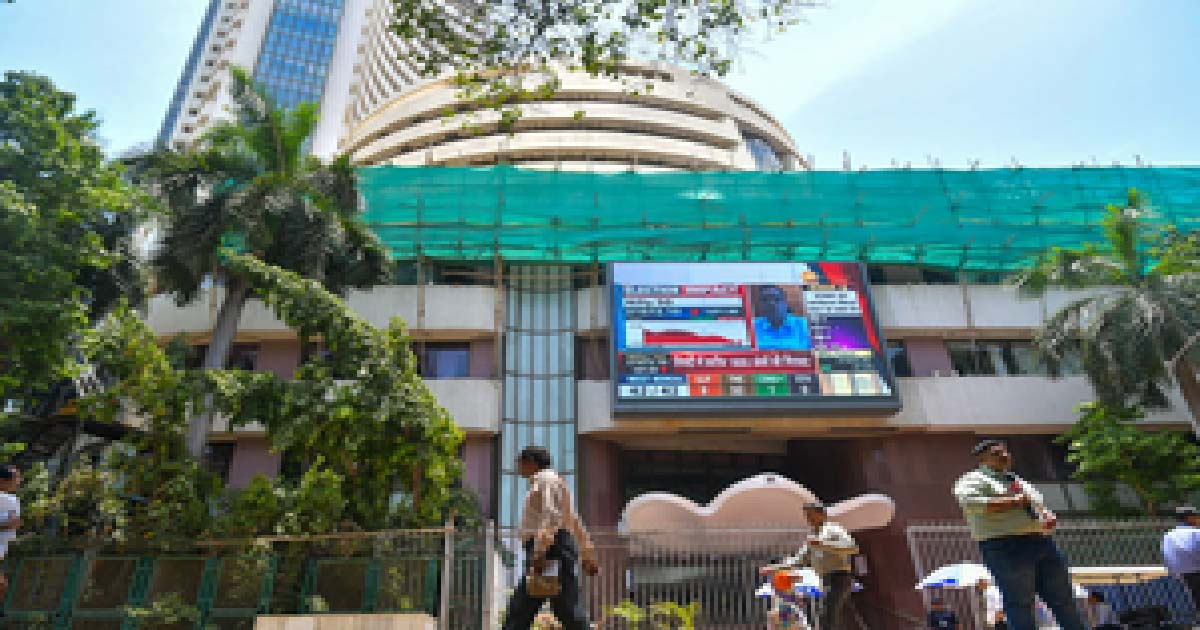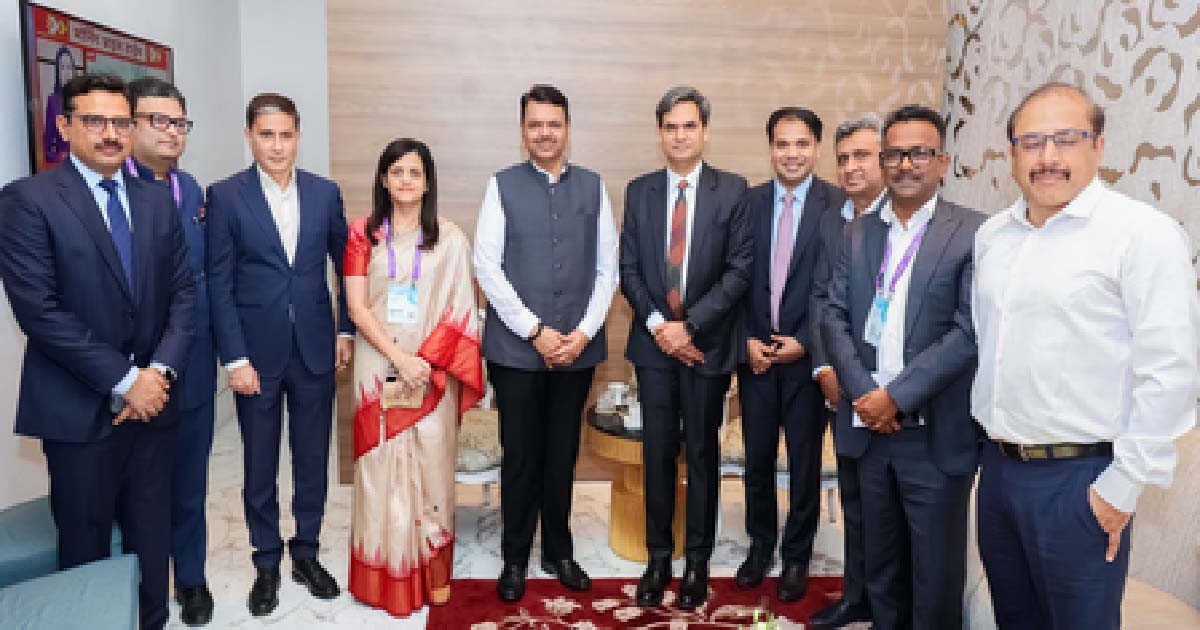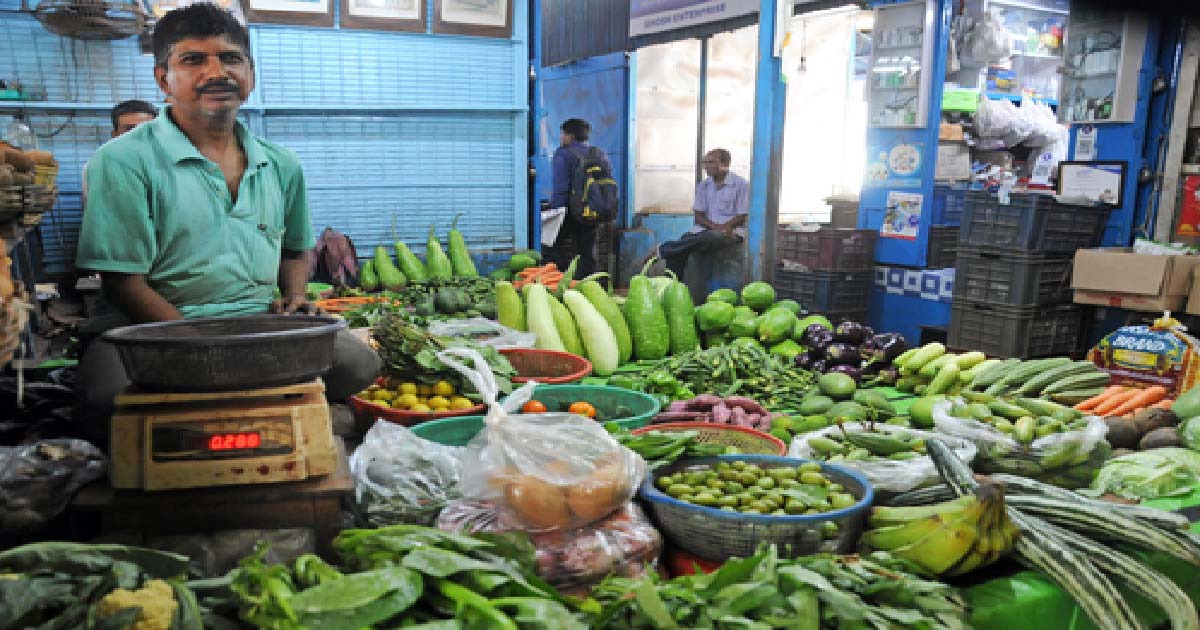Business
Sanjiv Puri’s ‘Next’ strategy drives ITC into future-ready lane with smart innovation in FMCG, Hotels, Agri

Diversified consumer goods conglomerate ITC appears to be closing in on turning its fast-moving-consumer-goods (FMCG), agriculture and hotel segments as its main growth drivers, with chairman Sanjiv Puri shepherding the ‘Next’ strategy for its next horizon of growth through bold acquisitions, and disruptive digital innovation.
This new strategy is aimed at ensuring that the ITC remains future-oriented, consumer-centric, and nimble to create enduring value for stakeholders, something that the financial results are mirroring with FMCG and agriculture contributing nearly half of its total revenues in the April-June quarter.
The FMCG segment has been driven by higher demand for hygiene products, fragrances, spices, snacks, agarbattis and dairy products, with Salvon standing out as a growth engine of sorts.
ITC acquired Savlon from Johnson & Johnson in 2015, foraying into the disinfectant and antiseptic products market. Savlon crossed Rs 1,200 crore in consumer spends in 2020-21, growing more than 13 times since acquisition, making it the largest brand in the company’s personal care products portfolio, overtaking Vivel.
ITC has launched over 120 new products over the last one year, with product innovations in hygiene, nutrition and convenience segments. These include Savlon’s foray into surface and cloth disinfectant sprays, ‘neem’ based cleaning solutions Nimwash and Nimeasy, convenience-focused products such as ITC Master Chef Frozen Snacks, and scale up nascent categories and products such like B Natural juices, Fabelle chocolates amongst others.
In four years from 2016-17 to 2020-21, the FMCG segment’s earnings before interest, taxes, depreciation and amortisation (EBITDA) margins have improved by 640 bps.
FMCG on fast lane
The company today is one of the largest incubators of world-class Indian brands. ITC FMCG business has garnered consumer spends of over Rs 22,000 crore and delighting more than 150 million households.
Scaling up and fortification of existing growth platforms consisting of megabrands is an essential cog in the wheel of ITC’s next strategy. The company has expanded its purpose-led brands like Savlon, Aashirvaad, and Sunfeast into adjacent categories with remarkable success. These brands have immense headroom to grow given the relatively lower household penetration and rising per capita income. ITC is exploring more value accretive inorganic opportunities as an additional pillar of growth.
Puri’s strategy to make ITC future-ready manifests in Life Sciences and Technology Centre (LSTC). LSTC helped ITC to launch 120 products amid the pandemic to meet emerging preferences. Towards this goal, the company has launched 9 state-of-the-art integrated consumer goods manufacturing facilities (ICML) to create structural advantages and drive enhanced competitiveness is also worth mentioning.
The new-age consumer is a digital native with extensive engagement in social and e-commerce platforms. Recognizing this, ITC is identifying emerging trends in real-time through its Marketing Command Centres called ‘Sixth Sense’ to speedily launch differentiated products as also creatively engage with consumers.
Under the ‘Next’ strategy, Puri has clearly sought to explore opportunities to craft disruptive business models anchored at the intersection of digital and sustainability. It is deploying a smart ecosystem with an integrated real-time operations platform across the organization to enable next-generation supply chains and smart manufacturing with digitally enabled factories.
The company has adopted multi-dimensional digital interventions for smart sourcing, smart logistics across businesses, and Industry 4.0 implementation in manufacturing. This is in addition to customized apps to facilitate digital ordering and trade engagement.
It has fast-tracked its journey in e-commerce, to meet the growing preference for ‘contactless shopping’. This is besides strengthening the direct-to-consumer platform, ‘ITC e-Store’ to reach consumers in newer geographies and introducing more ‘digital first’ brands to leverage the growing e-commerce space.
ITC under Puri’s stewardship is unwavering in its resolve to build a formidable FMCG business. Revenues from its FMCG business during the quarter stood at Rs 3726 crore, accounting for 25 per cent of the quarterly revenues. The agriculture segment turned in revenues of Rs 4,091 crore, accounting for 28 per cent of the company’s total quarterly revenues of Rs 14,649 crore before netting out inter-segment revenues of Rs 1,764 crore.
Big data, AI in agri
ITC’s decades-old agri business, powered by the e-choupal network, also appears to be coming of age.
Once the legal framework is in place that allows farmers to sell their produce outside their areas of cultivation, there is a clear opportunity in agri-business, similar to what ITC e-choupal in India and Pinduoduo in China have done successfully with scale.
Both are examples of using big data, technology network and artificial intelligence (AI) in farming to offer a better deal to peasants, make agriculture a rewarding vocation and bring them closer to the global markets by building digital platforms linking retailers with products consumers.
These will enable aggregation from farmers, incentivise creation of warehousing networks along highways, village storage schemes and the digitised app-based system for direct marketing by farmers, a model that ITC e-choupal has broadly demonstrated over the years.
Baareh Mahine Hariyali, an ITC e-Choupal initiative, which has combined multiple initiatives of cropping intensity (wheat, rice and summer moong), productivity enhancement and market linkages.
As reported by ITC, over 2 lakh farmers have already benefited from the interventions under the ‘Baareh MahineHariyali’ programme — over 35,000 farmers who have adopted the package of practices reported doubling of income and those who have implemented the programme partially reported increase in their incomes by 30 per cent to 75 per cent.
ITC, under Puri, is now implementing e-Choupal 4.0 at scale to bring the benefits of the digital revolution to agriculture. Envisaged as a ‘phygital’ system, the e-Choupal 4.0 is designed as a crop agnostic integrated solution framework that will synergistically aggregate technologies like remote sensing, precision farming, drone-based services, quality assaying and e-marketplace.
ITC e-Choupal 4.0 aims to strengthen agricultural entrepreneurship and agri-tech startups through agri services aggregator models, thereby empowering farmers with next generation agricultural practices. The aim of the model is to sharpen personalisation of agri services driven by data and analytics.
This may well be the right time for ITC’s integrated agribusiness enterprises with significant presence across crop development, procurement, supply chain, processing and marketing to decisively shift gears through a tech-driven matrix mounted on apps, blockchain, warehousing, AI and big data.
With the launch of Super App ‘ITC-MAARS’ that will bring the next phase of transformation in its agri-business and support the e-choupal through strength and scale under Puri.
Hotels and more
ITC’s hotel business has acquired scale and market standing over time. It is now set for a turnaround with the management decision to pursue asset right strategy while simultaneously leveraging ITC’s world-class properties.
Against this backdrop, the move to refresh ‘Welcomhotel’ is a long-awaited development as it will help the company to generate leads and pipeline for management contracts. Also, the launch of a new boutique brand christened ‘The Storii’ to offer the new-age traveller curated nature experiences will help the company make inroads into the emerging segment.
Business
Indian stock market ends in bullish tone over hopes of renewed FII inflows

Mumbai, Dec 13: Indian equity benchmarks made marginal losses during the week amid sustained FII outflows and uncertainty surrounding the US-India trade negotiations.
However, the market ended the week in a bullish tone with Nifty surging 0.57 per cent on the last trading day after the US Federal Reserve announced a 25-bps rate cut.
Benchmark indices Nifty and Sensex dipped 0.36 and 0.17 per cent during the week to close at 26,046 and 85,267, respectively.
Indian equities opened the week on a subdued note, amid continued rupee depreciation and negative global cues due to rising Japanese bond yields.
The US Fed rate cut later in the week eased liquidity concerns and fuelled hopes of renewed FII inflows. With supportive central bank policies, steady domestic investments, and optimism over trade progress despite unclear timelines, benchmarks closed the week on a strong note.
India’s year-on-year inflation rate based on the Consumer Price Index (CPI) was estimated at 0.71 per cent for November this year which was marginally higher than the 0.25 per cent in October, according to figures released by the Ministry of Statistics.
Broader indices underperformed, with the Nifty Midcap100 and Smallcap100 down 0.51 per cent and 0.67 per cent, respectively, in a week.
Sectoral performance was mixed, with IT under pressure while PSU banks, real estate and consumer durables witnessed selective buying.
Hrishikesh Yedve, AVP Technical and Derivative Research, Asit C. Mehta Investment Interrmediates, said that Nifty’s weekly chart shows buying interest at lower levels.
Nifty has 26,200 and 26,325 as stiff resistance levels while 25,700 will act as support zone, he added.
Analysts said that markets will likely remain positive in near future but sensitive to rupee stability, FII flow trends, trade agreement clarity, and cues from major central banks abroad.
Amidst risks from currency fluctuations and global trade uncertainties, improving earnings visibility and liquidity support provide a constructive backdrop and downside protection, they added.
Business
Maharashtra on path to becoming GCC hub: CM Fadnavis

Nagpur, Dec 12: Chief Minister Devendra Fadnavis on Friday announced that a crucial milestone has been achieved in the journey to establish Maharashtra as a GCC (Global Capability Centre) Hub.
He said that the Brookfield company is set to build Asia’s largest Global Capability Centre (GCC) in Mumbai, spanning approximately 2 million square feet.
The Chief Minister said that this project is expected to generate a total of 45,000 jobs, including 15,000 direct and 30,000 indirect jobs.
He stated that due to the state’s talent pool, infrastructure, and industry-friendly environment, Maharashtra is becoming a preferred destination for Global Capability Centres.
“The new GCC policy will lead to large-scale skill-based job creation and economic growth,” he added.
He also mentioned that FedEx, a global leader in the logistics sector, is keen to invest in its GCC and other operations near the Mumbai-Navi Mumbai airport area, said the government release.
The Chief Minister informed that he requested Microsoft to consider Maharashtra for their investments, noting that their largest existing investment is already in the state.
He expressed confidence that Microsoft will make a major investment in the future and take the lead in making Maharashtra an Artificial Intelligence (AI) centre.
The Chief Minister said that Maharashtra’s model for crime control with the help of Artificial Intelligence is a guiding light for the entire country.
Chief Minister Fadnavis confirmed that Microsoft has assured priority to Maharashtra in their largest ever investment in India, amounting to $17 billion.
He further highlighted the ‘Marble’ platform developed by Maharashtra, which helps detect cyber and financial crimes in just 24 hours instead of 3-4 months.
He said that this has resulted in saving people’s money and has expedited the process of tracking criminals.
Business
India’s CPI inflation estimated at 0.71 pc for Nov, food inflation stays in negative zone

New Delhi, Dec 12: India’s year-on-year inflation rate, based on the Consumer Price Index (CPI), was estimated at 0.71 per cent for November this year which was marginally higher than the 0.25 per cent in October, according to figures released by the Ministry of Statistics on Friday.
Food inflation stayed in the negative zone during November at (-) 3.91 per cent as prices of food goods fell compared to the same month of the previous year. Food inflation has now stayed negative for the sixth month in a row, easing the burden on household budgets.
However, the increase in headline inflation during November 2025 is mainly attributed to an increase in the inflation of vegetables, eggs, meat and fish, spices, and fuels compared to October, according to an official statement.
The retail inflation had eased further in October, after having plummeted to an over 8-year low of 1.54 per cent in September, as prices of food items and goods across sectors fell during the month.
The declining trend in food prices continued in October as food inflation fell deeper in the negative zone at (-) 5.02 per cent from (-) 2.28 per cent in September.
However, the overall outlook for inflation remains benign.
The RBI’s monetary policy committee (MPC) last week slashed its forecast for India’s inflation rate for the financial year 2025-26 to 2 per cent from 2.6 per cent predicted in October due to the sharp decline in food prices and the GST rate cuts playing out.
RBI Governor Sanjay Malhotra announced a reduction in the repo rate by 25 basis points to 5.25 per cent from 5.5 per cent earlier, as inflation had come down and the monetary policy could focus on boosting growth.
Malhotra said that the surge in economic growth to 8.2 per cent in the second quarter of the current financial year and the sharp decline in inflation to 1.7 per cent had provided a rare “Goldilocks period” for the Indian economy.
“The MPC noted that headline inflation has eased significantly and is likely to be softer than the earlier projections, primarily on account of the exceptionally benign food prices. Reflecting these favourable conditions, the projections for average headline inflation in 2025-26 and Q1:2026-27 have been further revised downwards.”
Malhotra also pointed out that core inflation (which excludes food and fuel) remained largely contained in September-October, despite continued price pressures exerted by precious metals. Excluding gold, core inflation moderated to 2.6 per cent in October. Overall, the decline in inflation has become more generalised, he added.
The RBI Governor observed that food supply prospects have improved on the back of higher kharif production, healthy rabi sowing, adequate reservoir levels and conducive soil moisture. Barring some metals, international commodity prices are likely to moderate going forward.
-

 Crime3 years ago
Crime3 years agoClass 10 student jumps to death in Jaipur
-

 Maharashtra1 year ago
Maharashtra1 year agoMumbai Local Train Update: Central Railway’s New Timetable Comes Into Effect; Check Full List Of Revised Timings & Stations
-

 Maharashtra1 year ago
Maharashtra1 year agoMumbai To Go Toll-Free Tonight! Maharashtra Govt Announces Complete Toll Waiver For Light Motor Vehicles At All 5 Entry Points Of City
-

 Maharashtra1 year ago
Maharashtra1 year agoFalse photo of Imtiaz Jaleel’s rally, exposing the fooling conspiracy
-

 National News1 year ago
National News1 year agoMinistry of Railways rolls out Special Drive 4.0 with focus on digitisation, cleanliness, inclusiveness and grievance redressal
-

 Maharashtra1 year ago
Maharashtra1 year agoMaharashtra Elections 2024: Mumbai Metro & BEST Services Extended Till Midnight On Voting Day
-

 National News1 year ago
National News1 year agoJ&K: 4 Jawans Killed, 28 Injured After Bus Carrying BSF Personnel For Poll Duty Falls Into Gorge In Budgam; Terrifying Visuals Surface
-

 Crime1 year ago
Crime1 year agoBaba Siddique Murder: Mumbai Police Unable To Get Lawrence Bishnoi Custody Due To Home Ministry Order, Says Report












